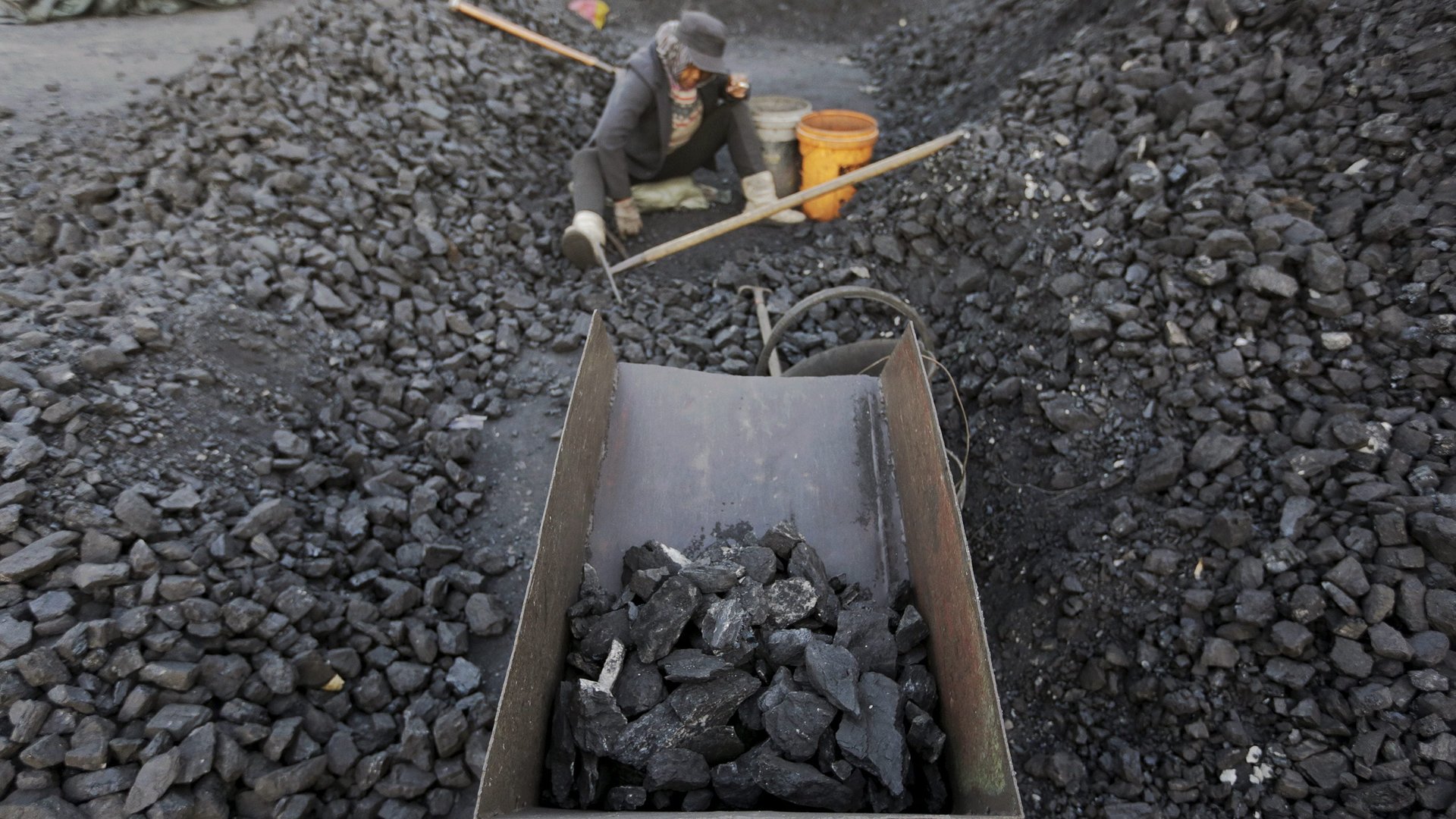China is turning to market-based pricing to tackle its energy crisis
China is facing an energy crisis, and officials are pulling out all the stops to ensure there’s enough fuel—primarily coal—to fire up power plants to keep factories churning, lights on, and heater running in the coming winter months.


China is facing an energy crisis, and officials are pulling out all the stops to ensure there’s enough fuel—primarily coal—to fire up power plants to keep factories churning, lights on, and heater running in the coming winter months.
“Supply shortage is the greatest energy insecurity,” said Chinese premier Li Keqiang during a meeting (link in Chinese) of the National Energy Commission last weekend to address the crisis. Power shortages have been so acute that the government has had resort to power rationing and power cuts across more than a dozen provinces.
One major step came this week when the National Development and Reform Commission (NDRC), China’s top economic planning agency, announced (link in Chinese) that it will allow coal-fired electricity prices to rise more sharply in response to the forces of supply and demand. The goal is to eventually have all coal-fired power be priced by the market “in an orderly manner,” instead of being regulated by the state. It didn’t provide a specific time frame.
The announcement was a tacit admission that government price controls have contributed to market distortions, leading to a mismatch between supply and demand, and causing chaotic nationwide shortages. In fact, officials have explicitly acknowledged as much (link in Chinese), with the NDRC’s secretary general saying yesterday (Oct. 13) that “such unreasonable interference must now be firmly stopped.”
For now, though, the government’s visible hand will still be at play. The NDRC will allow prices of coal-fired electricity to rise by as much as 20% from the government-set benchmark, compared to the previous 10% cap. Energy-intensive industries won’t be subjected to the cap.
“It’s not a full liberalization or marketization,” said Aiqun Yu, China researcher at the US nonprofit Global Energy Monitor. Still, she said, it is a “welcome policy change” because the disconnect between fully market-priced coal and government-regulated electricity prices has long distorted the market and was “a headache for all participants.”
“This time, the power shortage crisis forced the policymakers one step forward,” Yu added.
Can market-priced electricity solve China’s power crisis?
Whether more liberalized pricing is enough to immediately solve, or at least alleviate, the power crunch is another matter.
One factor that exacerbated China’s energy shortage was the inability of electricity prices to freely move with supply and demand. As coal prices hit record highs, power producers were unable to raise electricity prices, meaning some producers were losing money per additional ton of coal they burned, compelling some to shutter instead. The government said (link in Chinese) it hopes the market reform can encourage producers to stabilize output.
Another effect of the regulated electricity prices was that it dissuaded power producers from buying more coal. In the months running up to the energy crunch, power plants had been running down their coal stockpiles instead of buying ever-more expensive ones whose costs could not be passed on to electricity consumers, explained Lauri Myllyvirta, lead analyst at the Centre for Research on Energy and Clean Air, in Foreign Policy last week.
“Coal purchases have lagged behind demand and stockpiles have been falling since early 2021, so now when everyone is trying to restock at the same time, bottlenecks abound, and coal prices are through the roof,” he wrote.
Industry observers say the electricity price reform is more of a short-term solution to the power crunch. Southern Energy Observer, an industry publication supervised by state-owned China Southern Power Grid, compared the liberalization (link in Chinese) to a “‘low-glycemic Snickers bar’ for short-term problems.” Or, as Yu of Global Energy Monitor put it more explicitly: “The doubled coal price can not be resolved with a 20% electricity price up anyway.”
How will market-priced power affect China’s carbon goals?
At the same time as China has liberalized electricity prices, the government also yesterday ordered (link in Chinese) coal production to be ramped up, including by speeding up the opening of new mines and reopening suspended ones. While this may seem to run counter to Beijing’s goal of drastically cutting carbon emissions, experts argue that clean energy may ultimately benefit from the latest policy moves.
“Who can benefit from the power tariff reforms? It’s renewables,” said Yan Qin, the lead carbon analyst at Refinitiv.
Taking into account China’s nascent carbon trading market, which in principle means coal-fired power plants will have to pay more for their emissions, she explained, electricity producers will pass the higher costs on to consumers. Producers will be able to do so as competitive market prices will no longer be limited by government caps. Consumers will, in turn, want to turn to cheaper renewable options.
Producers will be incentivized to turn to cleaner fuels, too. “When you have fuel cost pass-through, then behaviors will change,” said Qin.
Indeed, this latest round of market price reforms for coal-fired electricity is directly tied to China’s clean energy transition, Feng Yongsheng, associate researcher at the Chinese Academy of Social Sciences, argued this week (link in Chinese). Only by having market-set prices that serve as signals, prompting people and businesses to opt for clean fuels and lower-carbon lifestyles, will China be able to develop a new green energy economy.
“The only way to achieve a smooth, solid, and effective green and low-carbon transformation of China’s economy is to rely on market-based reform of electricity prices and to guide the dynamic balance of energy transformation and economic development through electricity price fluctuations,” Feng wrote.